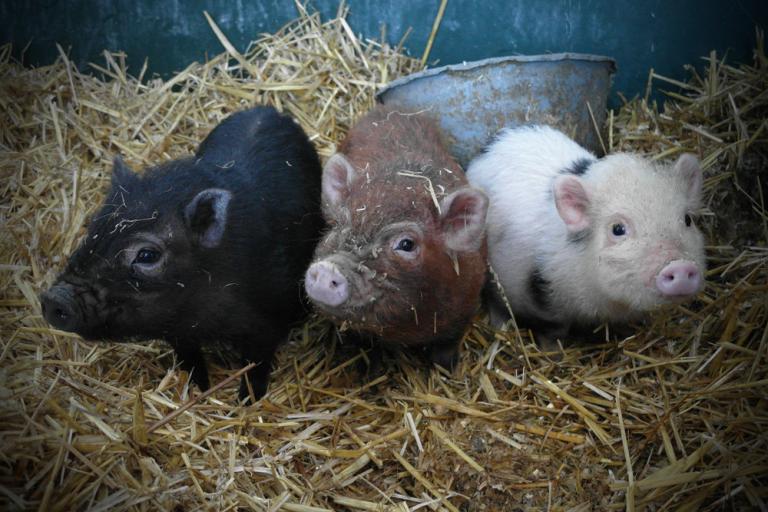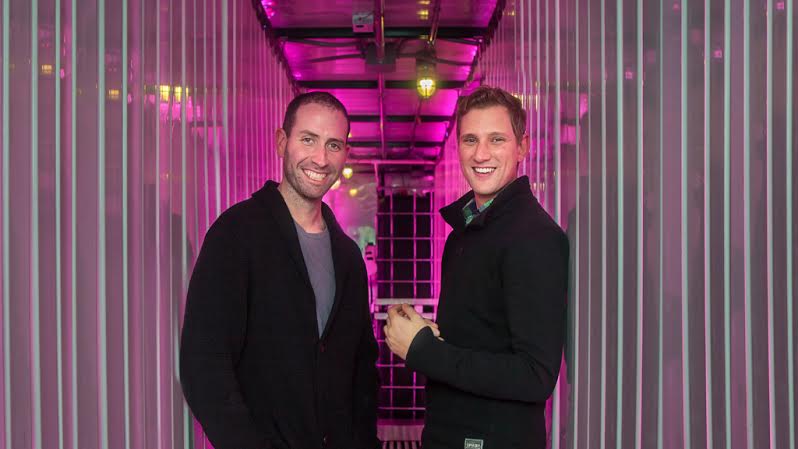Repurposed shipping containers have long enjoyed a place in the spotlight of sustainable development and eco-dream-home Pinterest porn. They’ve even started to appear as heralds for the local food economy — as grocery stores for food deserts and trendy pop-up restaurants. So it only makes sense that next up on the docket for urban agriculture and food independence are Freight Farms: hydroponic farms in shipping containers.
A Freight Farm is more than just a garden in a box. Each 325 square-foot unit comes equipped with high-efficiency red and blue LEDs to simulate night and day, a climate-controlled temperature system for optimal growth conditions, and vertical growing troughs. Translation: Farmers can enjoy a year-round growing season regardless of weather. Freight Farms are also sealable (no need for pesticides and herbicides), stackable, and (because of their closed loop hydroponic system) use 90 percent less water than conventional farming. And the fun part: Growth settings can even be controlled by a smartphone app.
Founder Jon Friedman calls his inventions “vessels for the next generation of food production.” And the irony isn’t lost on him that these vessels may have once been clocking food miles for the global shipping industry. “It’s one of those things, like, the weapon turns into the thing that saves everybody.”
Friedman, along with co-founder Brad McNamara, got into the urban agriculture game by staring a rooftop greenhouse company in the Boston area, but the venture proved costly and difficult to scale infrastructure-wise. Meanwhile, Friedman was looking into actually living in a shipping container since he couldn’t afford anywhere in the city. “And it really was this very cliché ‘aha’ moment, that these two things that I was trying to do were supposed to be one,” Friedman says. After a successful Kickstarter campaign in 2011, Freight Farms got their seed money and set up shop in Boston. Now, having successfully raised $1.2 million in late 2013, they’re growing, selling an average of two units a week.
So far the farms can grow the gamut of lettuces, herbs, and brassicas. A mushroom-growing unit is currently in the works and they are looking into space solutions for vine crops. At a cost of $70,000 to $85,000 per unit, Freight Farms aren’t for your average urban gardener. Friedman and McNamara’s clients include chefs, restaurants, distributors, vacant lot developers, food community entrepreneurs, schools, and even a hotel. The payoff, according to Friedman, is the ability to grow up to 4,500 plants a month.
Oh, and about that app: Freight Farmers can control lights, humidity, temperature, plant nutrients, and air circulation with just a few clicks on a smartphone. And if you want to check in on your plant babies, you can even call up a live video feed and watch them grow.
When it comes to the potential of cloud farming for food independence, Friedman is optimistic. “What really brings us forward are the things that make farming an everyday thing,” he says. “If we just apply a little design thinking and tech that we’re all comfortable with to farming, we’re going to see a lot of benefits come out.”
Not to mention a heap of locally produced fresh basil.



